
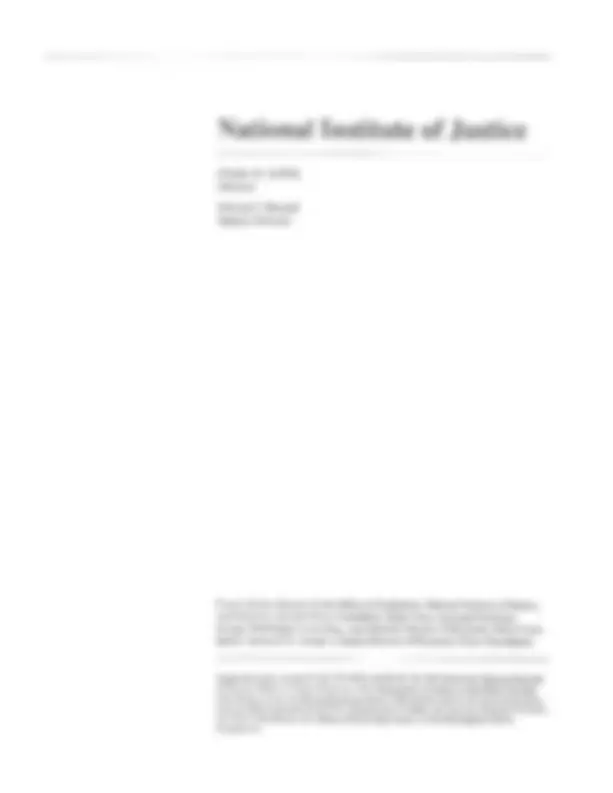

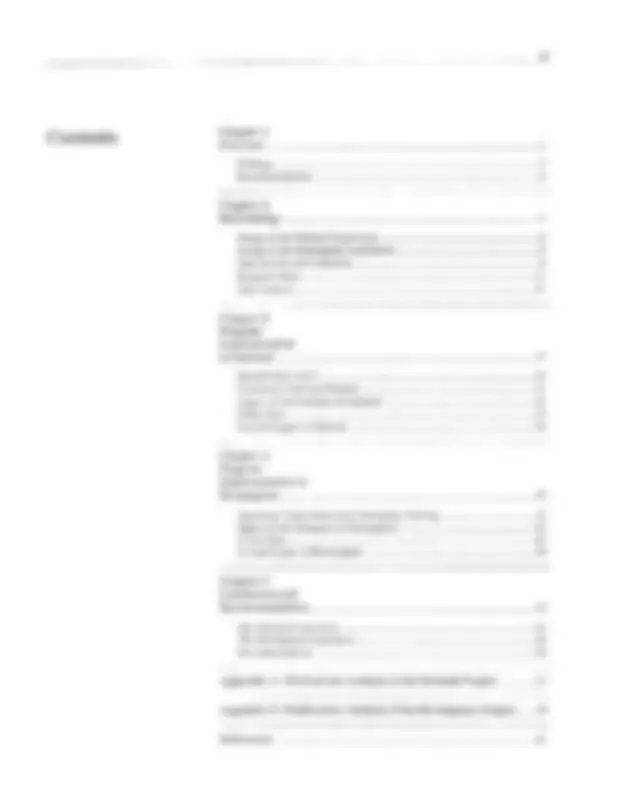




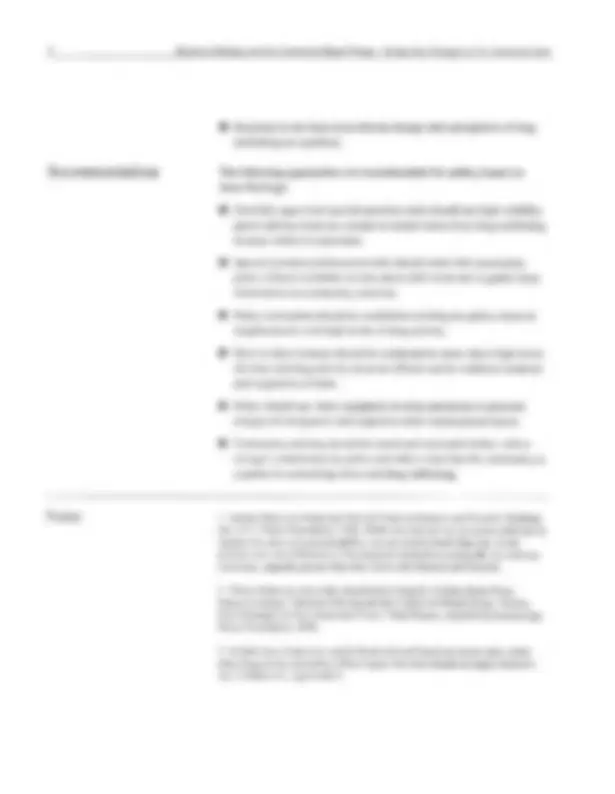




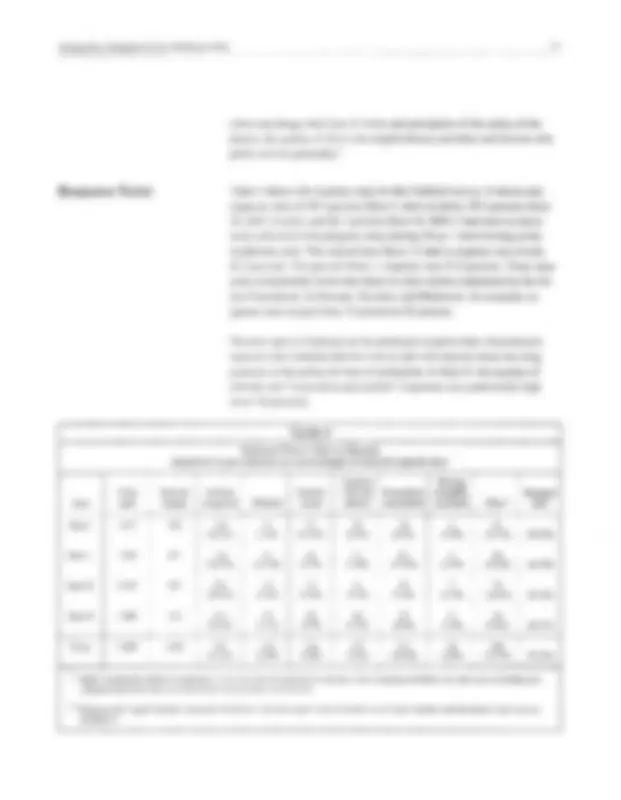

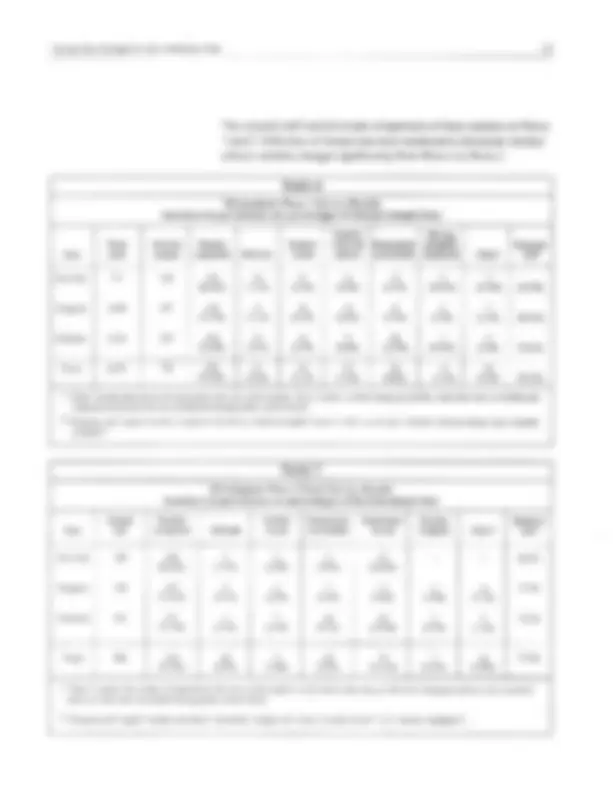

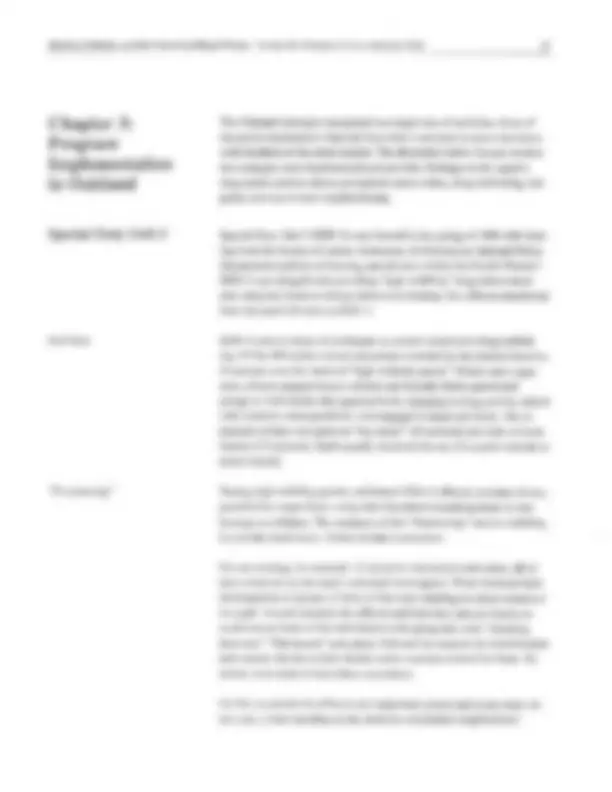



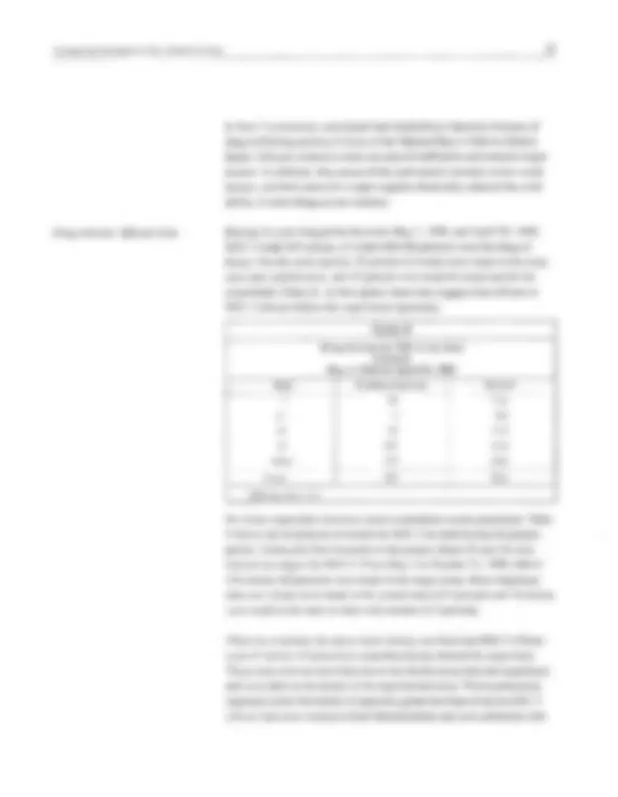
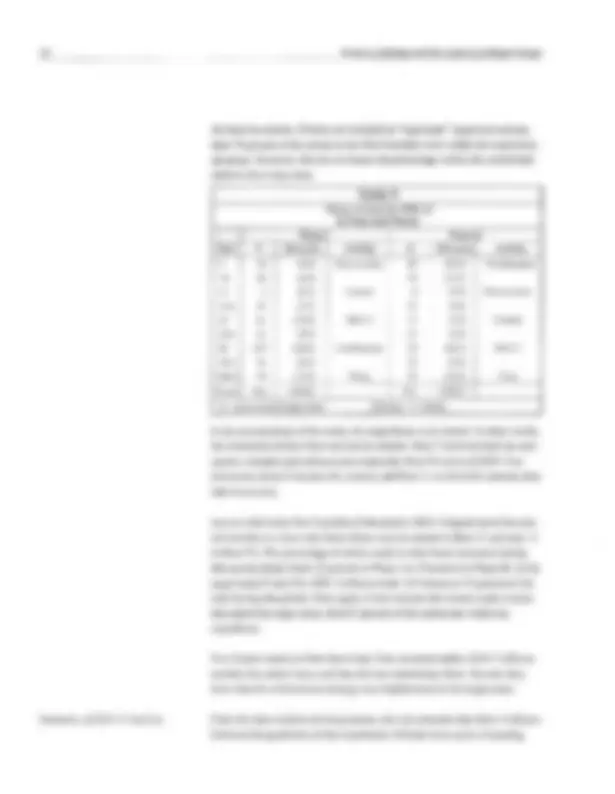
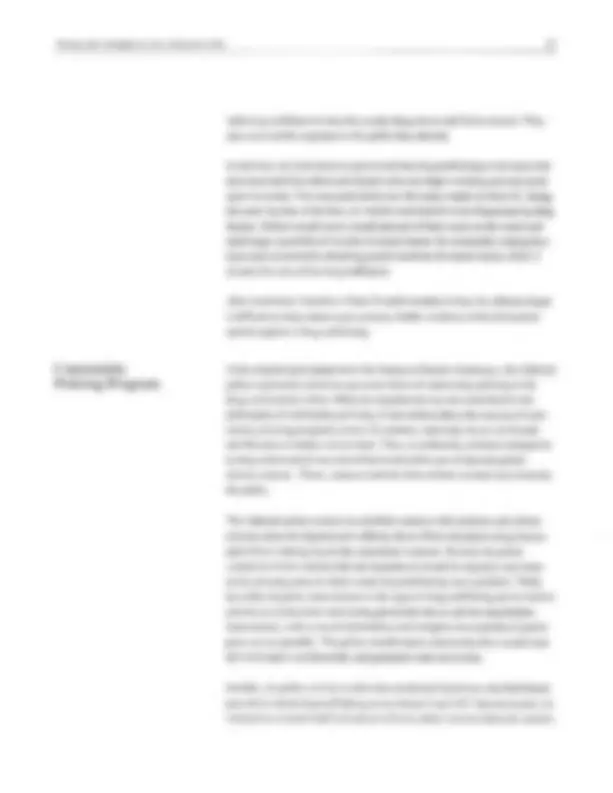


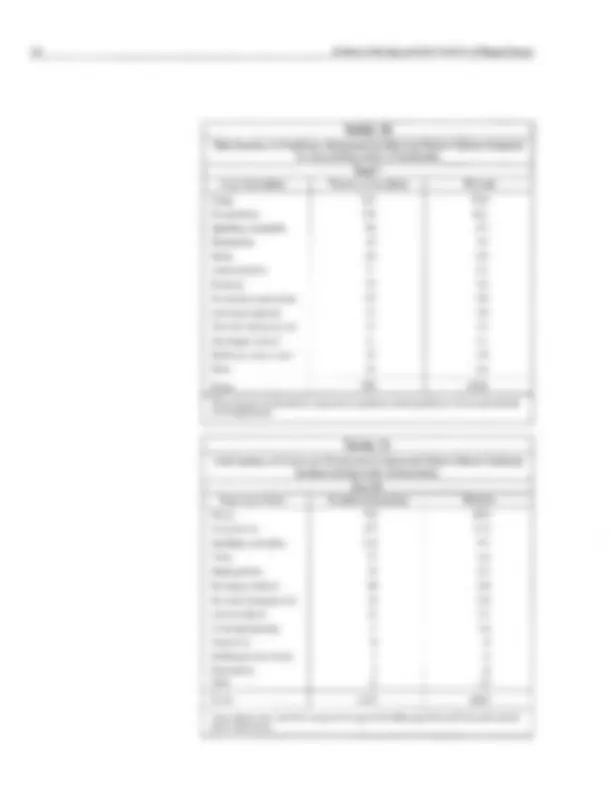






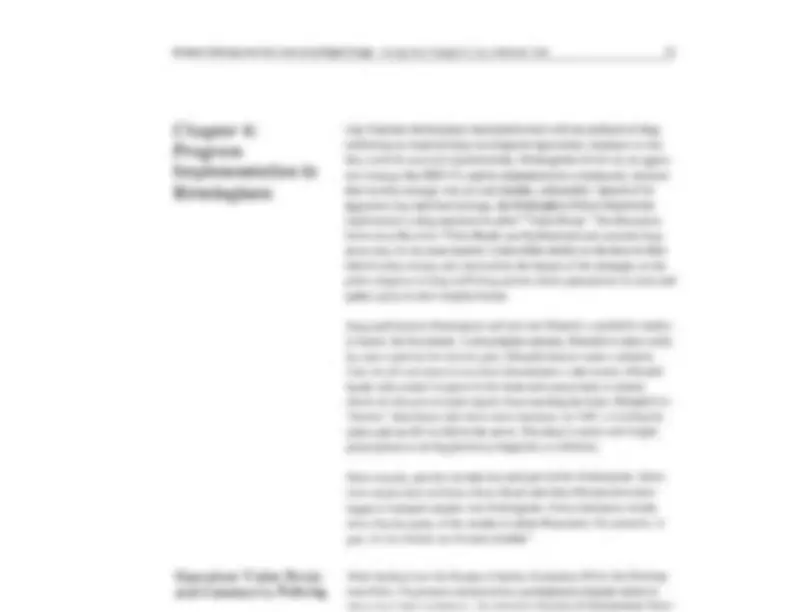












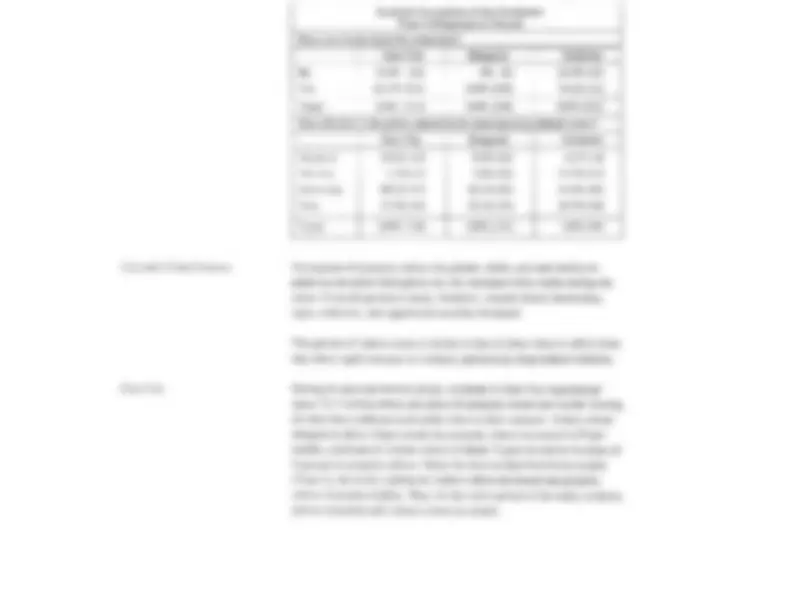
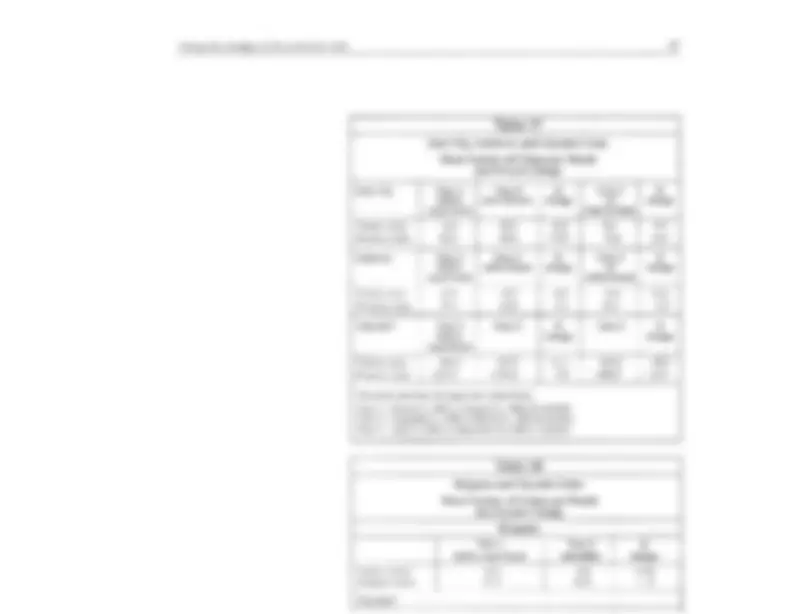

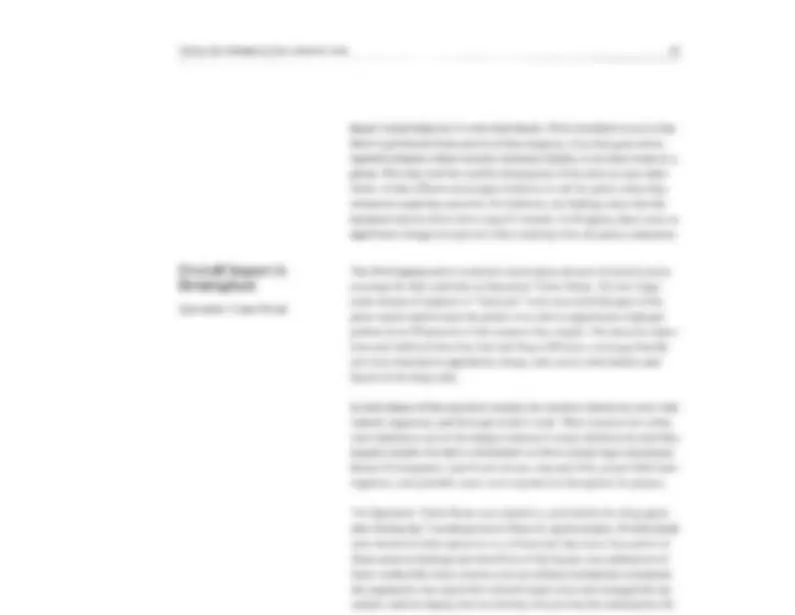



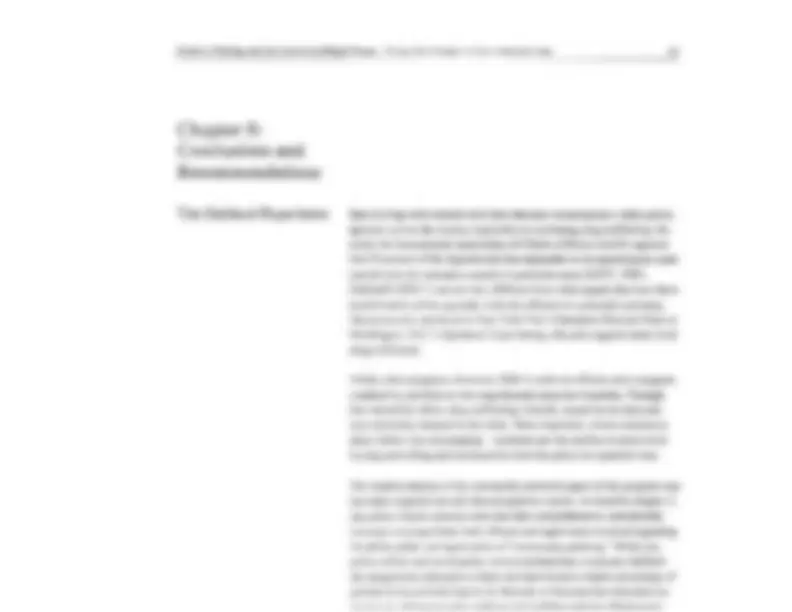



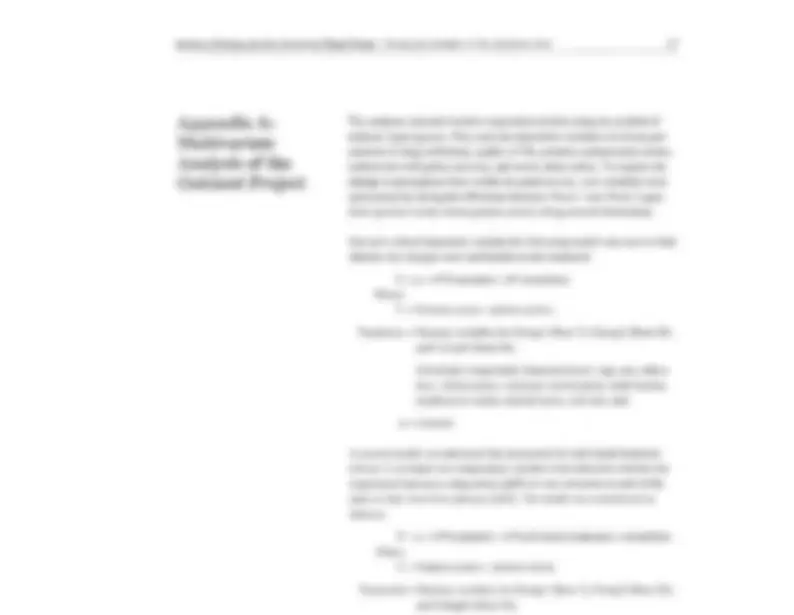

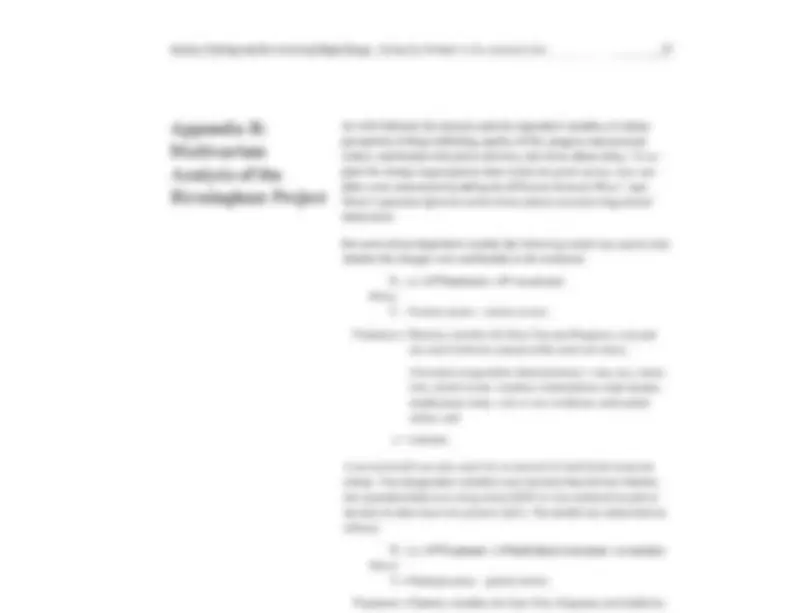



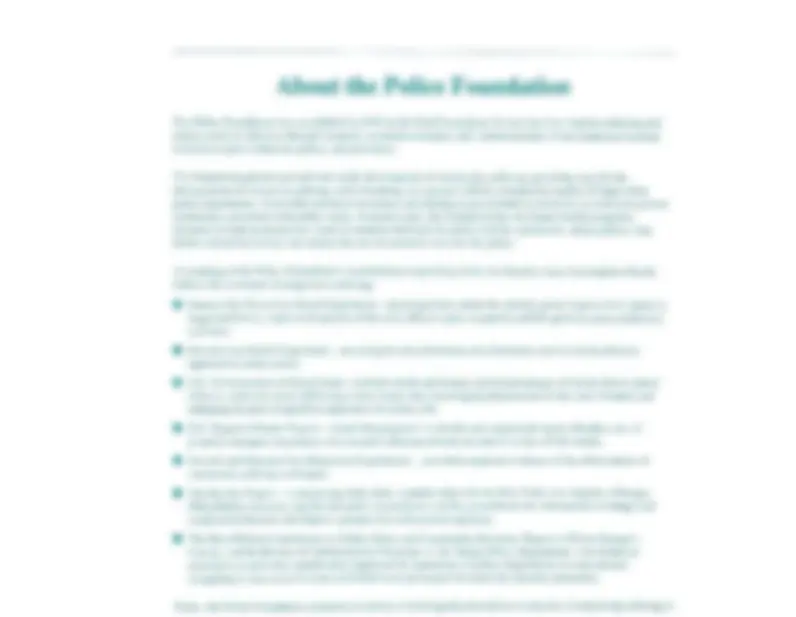



Study with the several resources on Docsity

Earn points by helping other students or get them with a premium plan


Prepare for your exams
Study with the several resources on Docsity

Earn points to download
Earn points by helping other students or get them with a premium plan
Community
Ask the community for help and clear up your study doubts
Discover the best universities in your country according to Docsity users
Free resources
Download our free guides on studying techniques, anxiety management strategies, and thesis advice from Docsity tutors
An in-depth examination of two large police departments' approaches to dealing with drug trafficking and drug-related crime. The study highlights the potential of police-citizen contacts in reducing crime and encouraging positive attitudes towards police. The findings suggest that community policing strategies, such as door-to-door interviews and the establishment of police substations, can lead to increased citizen satisfaction with police services and improved perceptions of neighborhood safety.
Typology: Study notes
1 / 72

This page cannot be seen from the preview
Don't miss anything!

































































U.S. Departme nt of Ju stice O ff ice of Justice Programs Na ti ona l Institute of Ju st ice
Th e National Ins titut e of Jus ti ce is the research and development agency of the U.S. Department of Justice , established to preven t and reduce crime and to improve the criminal justice syste m. Specific mandates established by C ongress in the Omnibus Crime Control and Safe Streets Act of 196 8, a s amended , and the Anti Drug Abuse Act of 1988 di rect the National Institute of Justice to:
The National In s titute of Ju sti ce has a long histo ry of acc omplishments, including the fo llowing:
The Institute Dire ctor , who is appointed by the President and confirmed by the Senate, es tablishes the Institute 's objectives, guided by the priorities of the Departme nt of Ju stice and the nee ds of the criminal ju stice field. T he Institute actively s oli cits the vi e ws of criminal j ustice professionals to identify their mo s t criti ca l prob lem s. De di cated to th e priorities of Federal , State, and local criminal ju stice agencies, rese arch and de velopment at the National Institute of Justice continues to searc h for answers to what work s and why in th e Nation' s war on drugs and crime.
Modern Policing and the
Control of ffiegal Drugs:
by
iii
Chapter 1: Contents (^) Overview .................................................... ...... ........ ......... ................................. /
Findings .................................................................................................... ..... 3 Recommendations ..... .. ........................................... ......... .. .. .......................... 4
Chapter 2: Methodology ...... ........... .................................... ... ....... .... ........ ..... ... ................... 5 Design of the Oakland Experiment ................ .. ............. ................ ................ 6 Design of the Birmingham Experiment ......................................................... B Data Sources and Collection .............. ........................ ... .. .. .. ....... .................... 9 Response Rates ................................... .. ........ .... ... ........................................ 11 Data Analysis .................................................... .. ......... ................................ 12
Chapter 3: Program Implementation in Oakland .. ..................................... ............................................... .... ............. 15 Special Duty Unit 3 ........... ..... ............ .. ............................................ ........... 15 Community Policing Program ..................................................................... 21 Impact of the Strategies in Oakland .. ............ ......... ........... ........... .. ... .. ........ 25 Crime Data ............................................. .. ............. ... ................................ .... 27 Overall Impact in Oakland .......................................................................... 30
Chapter 4: Program Implementation in Birmingham .............. .. ..... ... ......... ...... .... ......... ............... ... .. ..... .. .... .... ..... ..... ... 33 Operation 'Caine Break and Comm unity Policing ...... ........ .... .. ...... ... ...... ... 33 Impact of the Strateg ies in Birmingham ..................... .................... ...... ....... 42 Crime Data ................................................................................................... 45 Overall Impa ct in Birmingham ........ ............................................................ 49
Conclusions and Recommendations ........... ........... .. ......... .. .. ........................................ ....... ...... 53 The Oak land Experience .............. ......................................... .......... ............ 53 The Birmingham Experience .. ......... .............................................. .............. 54 Recommendations ....................................................... ................................ 56
Appendix A: Multivariate Analysis of the O akland Project .. ............ 57
Appendix B: Multivariate Analysis of the Birmingham Project ....... 59
References ..... ....... ............ .... ................... .. ......... ...... ... ........ ...... ...... .... .. .... ...... 61
v
Foreword Throughout the United States, clamping down on street drug trafficking is a major police priority. Law enforcement officials know that flagrant drug markets on our cities' streets openly challenge their authority and diminish the public's sense of security and confidence in police.
The National Institute of Justice, working with police officials and their professional organizations, is engaged in comprehensive research to learn which enforcement strategies and tactics have an impact on street drug trafficking and on the fear residents feel when neighborhood streets are overtaken by drug dealers.
This study provides an indepth examination of the way two large police departments have dealt with the problems of drug trafficking and drug related crime. Police in Oakland, California, and Birmingham, Alabama, employed special task forces for identifying and arresting drug traffickers and also incorporated, to a limited extent, some of the techniques of com munity policing. The findings highlight the potential of police-citizen contacts both in stemming crime and encouraging positive attitudes toward police.
The National Institute of Justice is committed to evaluations such as the one presented here. A number of evaluations of community policing are now under way, and NIJ expects that its comprehensive research on com munity policing will fill in some of the gaps noted in this report and assist other police departments in considering options best suited to their communities.
NIJ commends the able work of the Police Foundation and the police departments of Oakland and Birmingham, whose cooperation was essen tial to the success of the research effort. NIJ will continue this close coop eration with the law enforcement community to investigate practical new approaches to crime control.
Charles B. DeWitt Director National Institute of Justice
viii
Our research assistants at each site served as our eyes and ears while we worked in Washington. Their accomplishments were tremendous. Mary Gronert (Oakland) and Cecilia Saulters (Birmingham) went on raids with the officers routinely; collected, keypunched, and analyzed data continu ously; and wrote reports precisely. Their contributions to this report should not be overlooked.
Other contributors worked quietly in the background. At the Police Foun dation, Michael Whalen and Peter McMahon wrote computer programs, cleaned the data, and conducted preliminary analysis. Hattie Matthews kept track of our citizen interviews and ably assisted with interviewer training. At the National Institute of Justice, Mike Wilson's assistance in the latter stages of the analysis proved to be extremely constructive.
The support of these individuals and their respective organizations was invaluable. We appreciate and applaud their efforts to help us put this report together. We are, of course, solely re sponsible for any errors that may arise in the text.
Craig D. Uchida Brian Forst Sampson 0. Annan
Modern Policing attd the CotUrol of IUegal Drugs: Tes ting New Strategies in Two American Cities 1
Chapter 1: Overview
Two fairly large U.S. cities-Oakland, California, and Binningham, Ala bama- recently served as testing grounds for the effectiveness of differ ent models of policing to control street drug trafficking. In 1987, the Oakland and Binningham Police Departments received Federal funds for this purpose. Soon afterward, the National Institute of Justice commis sioned the Police Foundation to evaluate the effort. The Police Foundation worked closely with officials in the Oakland and Binningham Police De partments to ensure that the resources made available to each department under the Bureau of Justice Assistance (BJA) grants would make possible a systematic assess ment of the respective programs' effectiveness.
For a number of reasons, Oakland and Binningham were selected from the seven sites that received BJA funding. Both cities had planned strate gies that lent themselves readily to evaluation under a field experiment. Both are moderately large cities, Binningham having about 280,000 resi dents, Oakland 340,000. The population of each city is about 50 percent black and 40 percent white, and both cities have black mayors and white police chiefs (Chief George Hart in Oakland and Chief Arthur Deutcsh in Binningham). Both employ about 600 sworn officers.
The two cities, howeve r, are quite different in other significant aspects. In particular, Oakland ' s crime rates and drug problems arc among the worst in the country, while Binningham ' s are moderate for cities with popula tions of 250,000. Both cities have a cocaine problem, although Oakland's is more se rious and involves "crack." Binningham, on the other hand, has a more serious problem with powder cocaine and Dilaudid , a synthetic approximation of heroin.
While the analogy is imperfect, the pairing of Oakland and Binningham in this study is reminiscent of the pairing of Newark and Houston in the study on reducing the fear of crime conducted by the Police Foundation for the National In stitute of Justice some 5 years earlier. 1
This monograph describes, analyzes, and evaluates each department's attempts to control street-level drug trafficking.
In Oakland, the police employed Special Duty Unit 3, a corps of hand picked , specially trained officers who engaged in undercover buy-and bust operations, aggressive patrol, and motor vehicle stops. As part of the
Testing New Strate[!ies in Tux:> American Cities 3
Findings Overall, the study found these results in the two cities:
Oakland
Birmingham
4 Modent Policing and the Control of/Uegal Drugs: Testing New Strategies in Two American Cities
Recommendations
The following approaches are recommended for police, based on these findings:
Notes 1. Antony Pate et aL Reducing Fear of Crime in Houston and Newark, Washing ton, D.C.: Police Foundation, 1986. While two sites are by no means sufficient to support the claim of generalizability, two are clearly better than one. In the present case, the differences in the programs themselves across the two sites are enormous, arguably greater than they were with Houston and Newark.
6 Modern^ Policing^ and^ the^ Control^ ofIUegal^ Drugs:
Design of the Oakland Experiment
In its attempt to regulate drug trafficking in the early 1980's, the Oakland Police Department instituted many strategies including a variety of patrol strategies-mounted patrol, foot patrol, canine units, motorized patrol-in the central business district; 1 the rigorous enforcement of applicable drug related statutes; and the use of special duty units to combat street traffick ers.2 Despite these efforts, the drug problem continued. Faced with budget cuts and a reduction in personne!,l the Oakland Police Deparunent con fronted the question of how to deal with an enormous drug problem with diminishing resources.
In Birmingham, illicit street-level drug trafficking emerged as a serious problem around 1985. The problem in Birmingham differed from that in Oakland in many ways. First, rather than concentrating on crack cocaine, Birmingham drug traffickers sold and used powder cocaine and Dilaudid, a heroin substitute. Second, street-level trafficking was confined primarily to public housing areas, rather than permeating residential neighborhoods. Third, drug enforcement responsibility was given solely to vice-narcotics detectives and not allocated to patrol officers, as was done in Oakland. While Oakland patrol officers made arrests, they did not have the training or ability to control drug trafficking systematically. As few as a dozen narcotics officers were responsible for dealing with the entire city ' s drug problem.
Each department decided to alter its traditional enforcement methods and implement new strategies. The Oakland Police Department formed Spe cial Duty Unit 3, and the Birmingham Police Department launched Opera tion 'Caine Break. Both departments also explored community policing to combat drug trafficking and to encourage citizens to participate in the battle against drug abuse.
The centerpiece of the Oakland Police Department's program was Special Duty Unit 3 (SDU-3), a corps of carefully selected patrol officers. In addi tion, the police engaged in a form of community policing by using door to-door contacts to enlist community support against drugs. The researchers helped the Oakland Police Department develop this latter approach by providing orientation materials and onsite training.
Evaluation of the door-to-door campaign and the tactics of SDU-3 used a pretest/posttest experimental design. The deployment of these two aspects of Oakland's street drug trafficking prevention program was structured so that
Testing New Strategies in Two American Cities 7
each aspect could be evaluated within a 6-month field experiment in 4 of the city's 35 beal<;.^4 Two were in East Oakland (Beats 25 and 34) and two in West Oakland (Beats 7 and 11).
Research staff collected baseline data in each of the four areas during Phase I of the evaluation. This preexperimental phase lasted for 3 months, February to April 1988. During that period, they conducted the first wave of citizen surveys, collected monthly crime data, and recorded preliminary observa tions of police activity.
Treatment and control sites for Phase II were chosen at random. Beginning May I, 1988, and ending October 31, 1988, Beats 7, 25, and 34 received the treatments, with Beat 11 serving as the control. In Beat 34 the door-to-door approach and the special duty unit activities were applied. Beat 25 also re ceived the special duty unit activities in addition to conventional strategies. In Beat 7 the door-to-door campaign was added to conventional strategies. In Beat 11 current police operations were maintained at their preexperimental levels and strategies. (Table 2 shows the design of the study.)
On November 1, 1988, a rotation of treatments took effect. That is, for the next 6 months (Phase III of the evaluation), treatments were provided in Beats 7, 11, and 34, with Beat 25 serving as the control. Whereas in the first 6 months Beat 7 received only the door-to-door treatment, in the second 6 months it received both the door-to-door interviews and SDU-3. Beat 11 received the door-to-door interviews only. Beat 25, which previously re ceived special enforcement, now became the control beat. SDU-3 continued to work in Beat 34.
Phase III data collection was limited to crime data and observations of police activity. Because of budgetary constraints, citizen surveys were not conducted.
Table 2 Distribution of Strategies in Oakland Phase I Phase II (^) Phase III Beat 7 Beat 11 Beat 25 Beat 34
CP CP CP CP
DD CP SDU DD + SDU
DD+SDU DD CP SDU CP = Conventional policing DD = Door-to-door interviews SDU3 = Special Duty Unit 3
Testing New Strategies in Two American Cities 9
Data Sources and Collection
Observational Data
Drug Arrests
The first step in the analysis was to determine whether the programs were implemented by the police in both cities and to ensure that experimental conditions were followed. The research team used observational and offi cial data for this purpose. To evaluate the programs and determine their impact, the team relied on both survey data and reported crime data. A sur vey panel ofresidents in each beat was selected and interviewed twice. Reported crime data were collected for each beat and for the city as a whole to find if the experimental treatments altered crime patterns.
In addition to using these data sources, the researchers collected newspaper articles from the Oakland Tribune from January 1, 1988, to August 1, 1989, and the Birmingham Post-Herald and the Birmingham News from April 1, 1988, to October 1, 1989, to see how drug enforcement efforts were com municated to the public.
In Oakland, the research team made structured observations of the activities of SDU-3 for the year-long period beginning May 1, 1988, and ending April 30, 1989. During this time, a trained observer systematically re corded the major roles, behavior, and decisions of police and citizens in drug-related encounters.^5
The observer rode \-!th various members of SDU-3 on tours of duty that lasted from 8 to 10 hours. She recorded her observations immediately after ward. Of220 SDU-3 tours during the year-long period, the observer rode on 82 (37.3 percent). During the tours, 483 police-citizen encounters oc curred. These encounters (predominantly proactive in nature) included contacts with 810 suspected drug traffickers, 43 suspicious or disruptive persons, 3 complainants, and 2 victims. More than 2,700 bystanders were present at the encounters.
In Birmingham , the ob servations were not as structured, since each incident was basically the samc-Dfficers bought drugs from suspected traffickers or conducted sting operations.
The team coded and tabulated data on all arrests made by SDU-3 during the ! -year period to measure the unit's activities and to see if the experimental design was followed. Research staff obtained copies of all crime and arrest reports generated by SDU-3. They paid particular attention to the location of the arrest (beat number) and various characteristics of the arrest. Suspect characteristics, crime type, type of evidence, weapons, injuries, and other clements including those in the narrative were coded and analyzed.
10 Modern^ Policing^ and^ the^ Conlrol^ of/Uegal^ Drugs:
Crime Data
Newspaper Coverage
Birmingham and Oakland Panel Surveys
In Binningham, all drug cases and arrests made by narcotics detectives and patrol officers from January I, 1987, to April I, 1989, were coded and tabulated. Research staff were allowed access to these records by the nar cotics division. Characteristics of the case included location of arrest or police contact, suspect infonnation, crime type, and evidence. In addition, the researchers attempted to follow these cases through the court system to find if videotaped evidence strengthened the case. Thus, it was neces sary to examine district attorney files and court records.
The impact of the two approaches on the control of drug trafficking was also measured in tenns of the rates of serious crimes against the person (homicides, rapes, and felonious assaults), burglaries, and robberies in the target beats and citywide. In Oakland, monthly recorded crime data were collected for the four experimental areas and for the city during the 16 months before the programs were implemented and for 12 months while they were in operation.
In Binningham, monthly recorded crime data were collected for the three target areas and the city for 1987 to 1989.
A newspaper clipping service collected published reports from the Oak land Tribune and two Binningham newspapers, the Post-Herald and the Binningham News, that dealt with police matters and drugs during the months of the projects. This allowed the research staff to examine the media coverage that the largest newspapers in both cities gave to the drug problem.
The purpose of the panel survey of residents was to detennine the impact of the enforcement strategies and door-to-door component of the experi ment, measured in a variety of ways.
The fundamental evaluation design was based on comparing attitudinal measures collected before and after the programs' introduction. Interview ing the same people twice had the advantage of allowing for statistical controls that were not possible in an areawide analysis. These measures were obtained by conducting interviews with random samples of residents in the program areas and in the control area.
In both cities citizens were asked several questions about their awareness of a drug trafficking problem, the prevalence of crimes other than drug trafficking, their awareness of specific police programs aimed to control